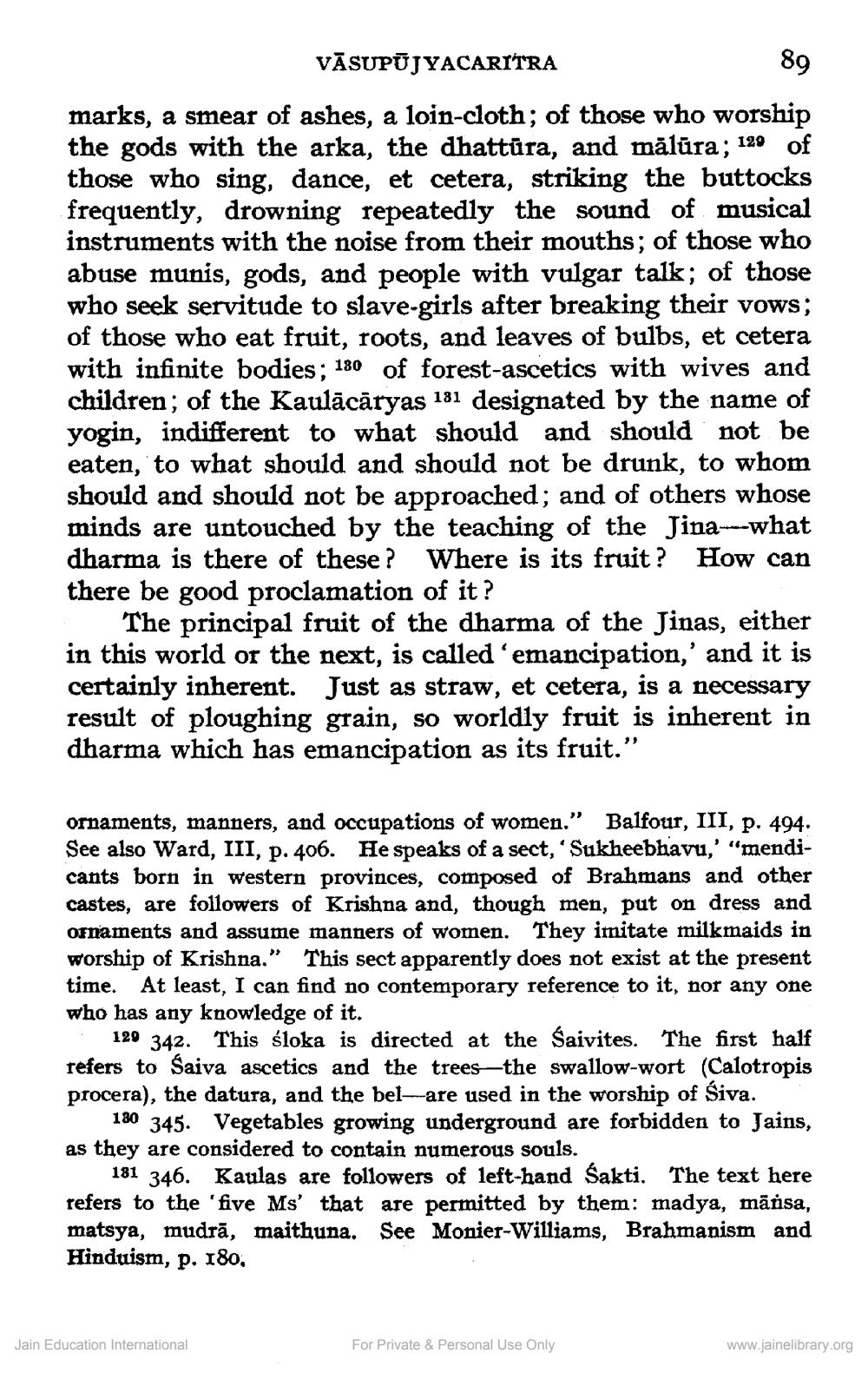________________
89
VĀSUPUJYACARITRA
marks, a smear of ashes, a loin-cloth; of those who worship the gods with the arka, the dhattura, and mālūra; 129 of those who sing, dance, et cetera, striking the buttocks frequently, drowning repeatedly the sound of musical instruments with the noise from their mouths; of those who abuse munis, gods, and people with vulgar talk; of those who seek servitude to slave-girls after breaking their vows; of those who eat fruit, roots, and leaves of bulbs, et cetera with infinite bodies; 180 of forest-ascetics with wives and children; of the Kaulācāryas 181 designated by the name of yogin, indifferent to what should and should not be eaten, to what should and should not be drunk, to whom should and should not be approached; and of others whose minds are untouched by the teaching of the Jina-what dharma is there of these? Where is its fruit? How can there be good proclamation of it?
The principal fruit of the dharma of the Jinas, either in this world or the next, is called 'emancipation,' and it is certainly inherent. Just as straw, et cetera, is a necessary result of ploughing grain, so worldly fruit is inherent in dharma which has emancipation as its fruit."
ornaments, manners, and occupations of women." Balfour, III, p. 494. See also Ward, III, p. 406. He speaks of a sect, 'Sukheebhavu,' "mendicants born in western provinces, composed of Brahmans and other castes, are followers of Krishna and, though men, put on dress and ornaments and assume manners of women. They imitate milkmaids in worship of Krishna." This sect apparently does not exist at the present time. At least, I can find no contemporary reference to it, nor any one who has any knowledge of it.
129 342. This sloka is directed at the Saivites. The first half refers to Śaiva ascetics and the trees-the swallow-wort (Calotropis procera), the datura, and the bel-are used in the worship of Śiva.
180 345. Vegetables growing underground are forbidden to Jains, as they are considered to contain numerous souls.
181 346. Kaulas are followers of left-hand Sakti. The text here refers to the 'five Ms' that are permitted by them: madya, mānsa, matsya, mudrā, maithuna. See Monier-Williams, Brahmanism and Hinduism, p. 180.
Jain Education International
For Private & Personal Use Only
www.jainelibrary.org




